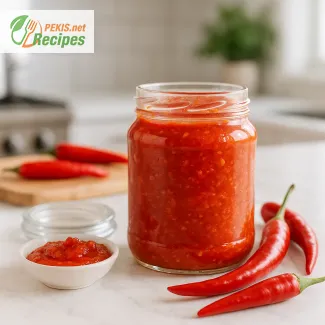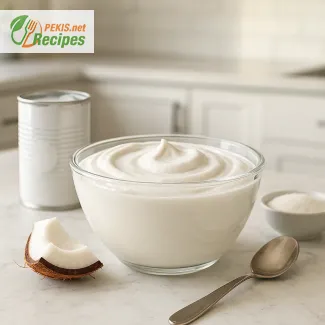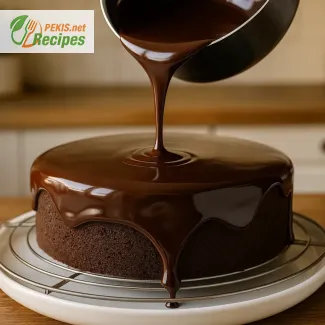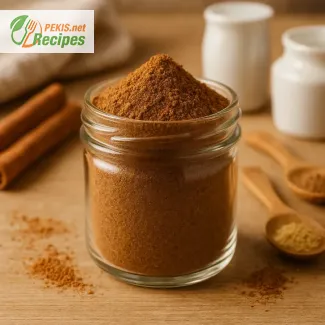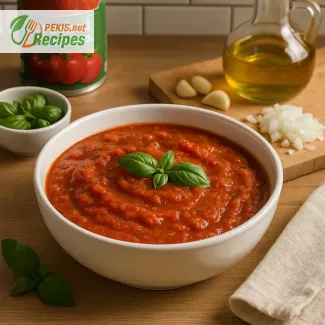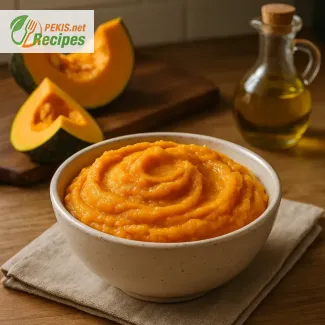
Mastering Pumpkin Purée: A Staple for Fall Cooking and Baking
The essential guide to creating smooth, rich homemade pumpkin purée
When autumn arrives, nothing captures the essence of the season quite like pumpkin. Whether you're baking pumpkin pie, preparing creamy soups, or making baby food, a smooth and velvety pumpkin purée is the base of countless beloved recipes. While canned pumpkin is widely available, learning how to make your own homemade pumpkin purée gives you full control over the texture, taste, and freshness of this foundational ingredient. It's a skill every home cook should have in their repertoire.
Homemade pumpkin purée is incredibly simple, requiring only fresh pumpkin and a bit of time. The payoff, however, is extraordinary: a naturally sweet, deeply flavored purée that outshines any store-bought version. The difference in color, texture, and taste becomes immediately noticeable once you use it in your favorite seasonal dishes.
Why make your own pumpkin purée?
Unlike canned options, which may contain preservatives or be made from squash blends instead of true pumpkin, a from-scratch pumpkin purée allows for purity and customization. You can choose your preferred pumpkin variety—such as sugar pie, kabocha, or butternut—each offering unique flavor notes and textures. This means you're not limited to the generic flavor profile of commercial cans.
Making your own purée also allows you to control the moisture level. Some recipes require a thicker, drier purée (ideal for pies and baked goods), while others benefit from a more fluid consistency, such as in sauces or smoothies. Homemade purée lets you adapt to the needs of each dish.
Choosing the best pumpkin for purée
Not all pumpkins are created equal. Large carving pumpkins may look impressive, but their flesh is often watery and bland. For optimal results, opt for culinary pumpkins like sugar pumpkins or pie pumpkins, known for their sweet, dense, and flavorful flesh. Varieties like Red Kuri, Kabocha, and Butternut squash also make excellent purées thanks to their rich taste and smooth texture.
Always select pumpkins that are firm, heavy for their size, and free of bruises or soft spots. A good-quality pumpkin ensures a silky purée that can elevate everything from breakfast muffins to festive desserts.
Texture and flavor: the hallmark of quality purée
The ideal pumpkin purée should be thick, smooth, and vibrant in color. It should hold its shape on a spoon yet blend effortlessly into both sweet and savory dishes. The roasting method you use can greatly influence the final flavor—slow roasting intensifies the natural sugars, delivering a more caramelized and complex taste compared to boiling or steaming.
For a purée that shines in baking, moisture content is key. After roasting and blending the pumpkin, it's often helpful to strain the purée through cheesecloth or a fine sieve, especially if using varieties with higher water content. This step ensures a rich, concentrated texture perfect for recipes that require structure, like pumpkin pie or gnocchi.
Storage tips and seasonal prep
A major benefit of making pumpkin purée at home is the ability to store it for later use. Once cooled, the purée can be kept in the fridge for up to five days or frozen in airtight containers for up to three months. Consider freezing in portioned sizes—such as 1-cup measurements—so you always have just what you need on hand for quick meal prep.
Homemade purée is an ideal addition to your seasonal cooking routine, helping you maximize the short pumpkin season. It’s perfect for creating holiday classics, experimenting with new dishes, or simply enjoying a taste of autumn any time of the year.
Culinary uses beyond desserts
While pumpkin purée is a key ingredient in pies, it’s far more versatile than many realize. It can be stirred into oatmeal, blended into smoothies, folded into pancake or waffle batters, or incorporated into sauces and risottos for a subtle sweetness. In vegan or dairy-free cooking, it’s often used as a natural thickener or butter substitute.
Pumpkin purée also works well in savory dishes. Try mixing it into soups with warming spices like cumin, cinnamon, and ginger, or stir it into pasta sauces with garlic and sage. Its earthy sweetness balances well with bold ingredients, offering depth to even the simplest weeknight meal.
Tips for perfect results every time
For the smoothest purée, a high-speed blender or food processor is essential. Roasting the pumpkin with the skin on helps retain flavor and moisture while making it easier to scoop the soft flesh after cooking. If the purée turns out too thick for your recipe, simply thin it with a little water or plant-based milk.
To enhance flavor naturally, some cooks add a pinch of salt before puréeing. Others like to infuse subtle notes of flavor by roasting with cloves of garlic, sprigs of thyme, or drizzles of olive oil—especially when the purée is intended for savory applications.
By following a few simple techniques, you can create a restaurant-quality pumpkin purée in your own kitchen. Its rich color, smooth consistency, and naturally sweet flavor will become a cherished ingredient in your culinary arsenal.
- Preheat the oven to 190°C (375°F).
- Cut the pumpkin into large chunks (approximately 5–6 cm / 2 inches). Remove the seeds and stringy center.
- Place the pumpkin chunks skin-side down on a parchment-lined baking tray.
- Lightly brush the flesh with olive oil and sprinkle evenly with salt.
- Roast in the oven for 40–45 minutes, or until the flesh is soft and can be pierced easily with a fork.
- Remove the tray from the oven and allow the pumpkin to cool slightly (about 5–10 minutes).
- Scoop the soft flesh out of the skin using a spoon. Discard the skin.
- Transfer the pumpkin flesh to a food processor or blender. Blend until completely smooth.
- If the purée is too thick, gradually add water, one tablespoon at a time, and blend again until the desired consistency is reached.
- Let the purée cool completely before storing. Use immediately or store in an airtight container in the refrigerator for up to 5 days or in the freezer for up to 3 months.
Elevating Homemade Pumpkin Purée with Flavor, Texture, and Nutrient Boosts
Expert advice for refining your purée for both taste and nutrition
When it comes to improving a traditional pumpkin purée, even the simplest tweaks can make a significant difference in flavor depth, texture, and nutritional value. While the base recipe remains a clean and straightforward blend of roasted pumpkin, olive oil, and salt, you can elevate this staple dish through smart ingredient choices and preparation techniques.
Flavor-enhancing ingredients and their effects
In its purest form, pumpkin purée has a mild, slightly sweet taste and creamy consistency. However, by incorporating a few well-chosen flavor enhancers, you can tailor the purée to suit specific culinary needs—whether savory or sweet.
Adding roasted garlic to the tray during baking imparts a mellow, nutty undertone that works especially well in soups or pasta dishes. For a sweet variation, roasting the pumpkin with a sprinkle of cinnamon or nutmeg enriches the purée’s natural sugars, making it ideal for desserts or breakfast bakes.
Another upgrade is blending in a small amount of unsalted butter or coconut cream, which adds silkiness and a more indulgent mouthfeel. This is particularly effective when the purée will be used in pies or velvety sauces.
A pinch of smoked paprika or freshly grated ginger introduces a subtle warmth and complexity—perfect for savory autumn recipes. Each addition should be minimal to keep the pumpkin as the star of the dish.
Texture improvements through technique
Achieving the perfect texture for pumpkin purée depends on the variety of pumpkin and the roasting method. For a smoother, richer consistency, use a high-powered blender and strain the purée through a fine-mesh sieve or cheesecloth after blending. This is essential if the purée will be used in baking, where excess moisture can ruin the structure of the final product.
If your purée turns out watery, gently simmering it on the stovetop in a nonstick pan can help reduce moisture while intensifying the flavor. Stir continuously to avoid scorching, and you’ll be rewarded with a denser, more robust purée.
For a chunkier variation suitable for rustic dishes like stews or spreads, pulse the roasted pumpkin instead of blending fully. This keeps the natural texture of the vegetable intact and offers a heartier mouthfeel.
Nutrient-rich substitutions and additions
One of the best ways to enrich this recipe is by mixing in other nutrient-dense vegetables. Roasting carrots or sweet potatoes alongside the pumpkin and blending them in adds more beta-carotene, fiber, and vitamin C, all while enhancing sweetness and creaminess.
Replacing olive oil with flaxseed oil or avocado oil increases the omega-3 fatty acid content without altering flavor drastically. These oils also support heart health and are stable enough to mix into a warm purée after roasting.
For those reducing sodium intake, skip the salt and use herb blends like rosemary, thyme, or sage to impart flavor without compromising on health. These herbs complement the earthy profile of pumpkin and provide natural antioxidants.
Why homemade always tastes better
Store-bought pumpkin purée may be convenient, but homemade versions consistently offer superior freshness, depth of flavor, and versatility. Commercial options often include extra water, preservatives, or even other squash varieties masquerading as pumpkin. In contrast, roasting your own pumpkin locks in sweetness and creates a rich, naturally caramelized profile that enhances every dish it touches.
Homemade purée also empowers you to select the best pumpkin varieties, such as Red Kuri, Kabocha, or Sugar Pie, each offering a slightly different flavor spectrum. By controlling your ingredients, you eliminate unnecessary additives and adapt the purée to your culinary intentions.
Common mistakes and how to avoid them
One of the most frequent mistakes when making pumpkin purée is using the wrong pumpkin variety. Large carving pumpkins have bland, fibrous flesh and are unsuitable for culinary use. Always choose pumpkins labeled as “sugar,” “pie,” or “culinary” for best results.
Another common error is undercooking the pumpkin, which leads to a lumpy or gritty purée. Always test the flesh with a fork—it should slide in easily. Additionally, not draining or straining a watery purée can lead to poor results in baked goods or sauces. Address this by draining the purée through a fine sieve or reducing it on the stove.
Finally, over-seasoning early in the process can limit the purée’s adaptability for different recipes. Keep the base neutral, then season when incorporating it into specific dishes.
Health-conscious adjustments
For a lighter version of the purée, omit the oil entirely and roast the pumpkin dry. The result will still be flavorful, especially if the pumpkin is roasted cut-side down to concentrate its sugars. This version is ideal for those on low-fat diets or those watching their caloric intake.
If you're looking for extra protein, blending in a small amount of silken tofu or white beans can thicken the purée while adding a creamy texture and valuable nutrients—especially useful when preparing meals for children or athletes.
The purée also serves as a low-calorie substitute in baking, replacing butter or oil in recipes like muffins, pancakes, and even brownies. It adds moisture and a touch of sweetness while reducing saturated fats.
Seasonal and culinary versatility
Pumpkin purée’s real magic lies in its versatility. From a side dish at Thanksgiving to a base for creamy risottos or an ingredient in smoothies, its applications span sweet and savory. Infusing the purée with subtle spice blends or incorporating it into batters and doughs gives endless room for creativity.
You can even use it as a base for spreads, combining it with tahini, lemon juice, and cumin for a seasonal hummus alternative. Or swirl it into yogurt and granola bowls for a warm, autumnal twist on breakfast.
By understanding the foundations of flavor, technique, and nutrition, this humble purée becomes more than just a seasonal side—it transforms into a year-round kitchen essential.
Allergens present in the recipe:
- None (naturally gluten-free, dairy-free, egg-free, nut-free)
Tips to eliminate allergens and gluten:
- Ensure gluten-free certification for store-bought oil if necessary.
- This recipe is already allergen-safe and suitable for vegan, vegetarian, gluten-free, and paleo diets.
Vitamins and minerals per serving (approximate):
- Vitamin A: 9500 IU – supports eye health and immune function
- Vitamin C: 12 mg – helps with skin, bone, and immune system health
- Potassium: 320 mg – aids in fluid balance and muscle function
- Magnesium: 22 mg – essential for nerve and muscle function
- Iron: 1 mg – supports oxygen transport in the blood
Antioxidants per serving (approximate):
- Beta-carotene: 7 mg – converted into Vitamin A, protects cells from oxidative damage
- Lutein + Zeaxanthin: 1.5 mg – promotes eye health and may reduce the risk of chronic diseases
- Vitamin E: 0.7 mg – contributes to immune defense and protects against free radicals
